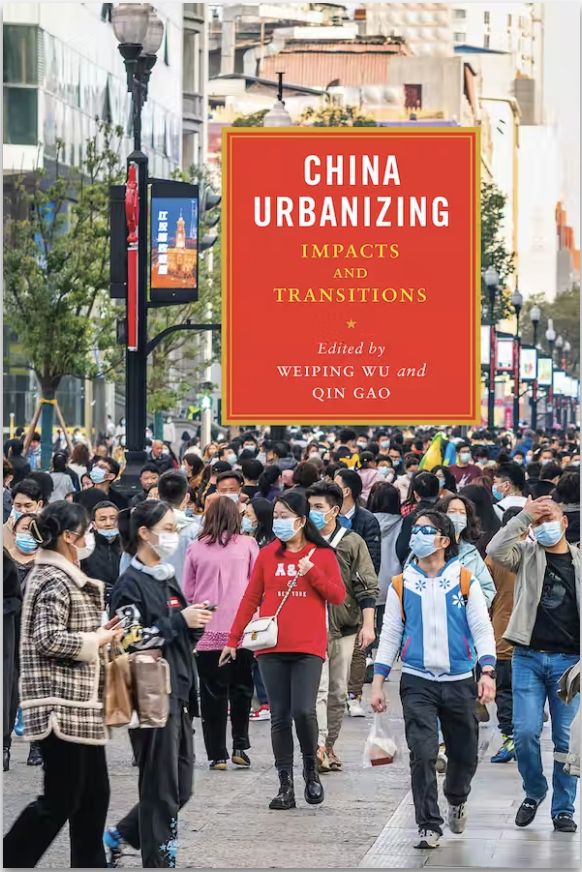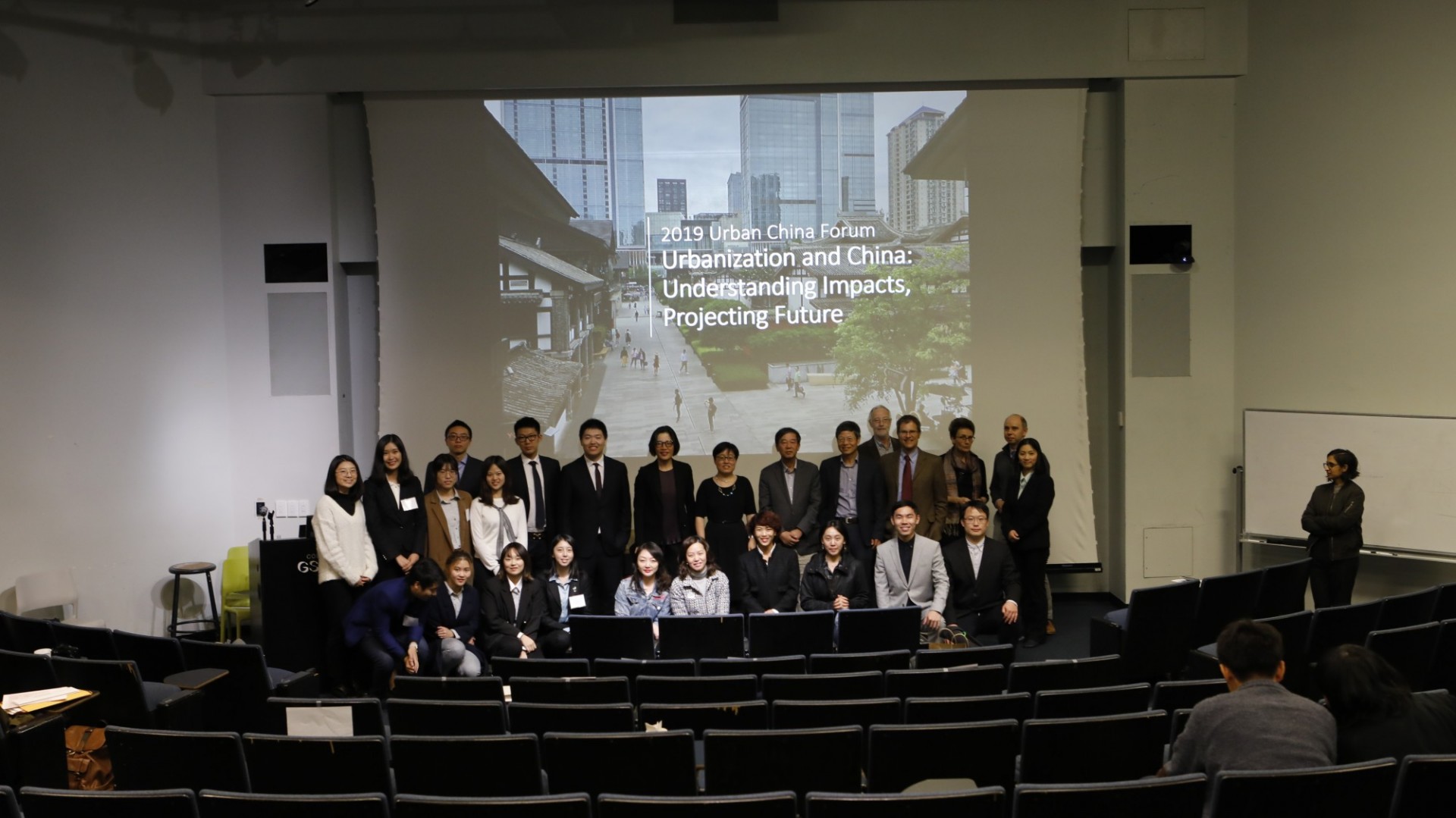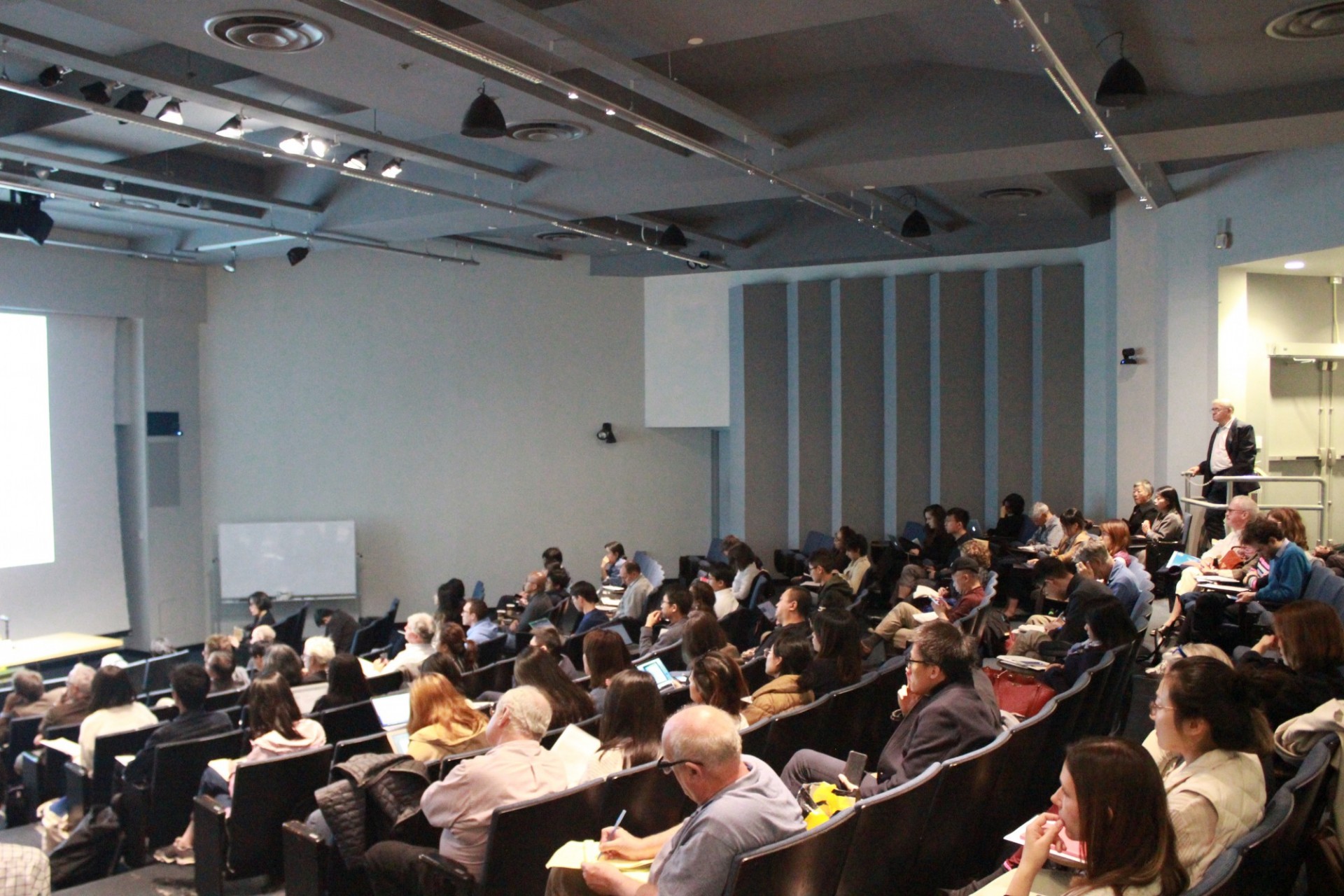WEAI Author Q&A: Weiping Wu and Qin Gao on 'China Urbanizing'
We are excited to announce a new title in the Studies of the Weatherhead East Asian Institute book series: China Urbanizing: Impacts and Transitions published by University of Pennsylvania Press. The book is edited by Weiping Wu, Professor of Urban Planning at Columbia GSAPP and Director of Urban Planning programs, and Qin Gao, Professor of Social Policy and Social Work, Associate Dean for Doctoral Education at the School of Social Work, and founding director of Columbia University’s China Center for Social Policy.
China turned majority urban only in the recent decade, a dramatic leap given that less than 20 percent of its population lived in cities before 1980. This book situates China’s urbanization in the interconnected forces of historical legacies, contemporary state interventions, and human and ecological conditions. It captures the complexity of the phenomenon of urbanization in its historical and regional variations, and explores its impact on the country’s socioeconomic welfare, environment and resources, urban form and lifestyle, and population and health. It is also a book about China, in which the contributors provide new perspectives to understand the transitions underway and the gravity of the progress, particularly in the context of demographic shifts and climate change.
The chapters in China Urbanizing, written by American and Chinese scholars, achieve three interconnected aims. The first is to explore how the process of urbanization has shaped and been influenced by the social, economic, and physical interactions that take place in and beyond cities, and the state interventions intended to regulate such interactions. The second is to examine the shifts and evolutions emerging in urban China, such as the economic slowdown, population aging and low fertility rates, and how cities interact with the environment and planet given China’s rising role in the global discourse on climate change. The third is to explore new sources of information for conducting research on urban China, such as satellite and street-level imagery data and online listings, to account for the complexity and heterogeneity that characterize contemporary Chinese urbanization.
We thank Professors Wu and Gao for taking the time to discuss their edited volume with us.
Q: Can you tell us a bit about the nature of this collaborative and interdisciplinary book? How did you first decide to work on this project?
The 70th anniversary of WEAI, together with earlier prodding by Andy Nathan, provided the initial impetus. As part of the celebration, we proposed to collaborate in hosting a Urban China Forum – now a long-standing, annual event organized by GSAPP’s urban planning students with Weiping’s oversight – to bring together a group of prominent scholars from multiple disciplines to discuss the impact of China’s sweeping urbanization on the country’s environment and land resources, cityscape and urban governance, social fabric and welfare, and health and human conditions. Colleagues from anthropology, economics, political science, public health, social policy, social work, sociology, and urban planning across North America and from China gathered on the Columbia campus in October 2019. The outcomes of that forum became the basis for the book. With feedback from the forum discussions and from us, contributors revised their chapters before we connected with the editors of The City in the 21st Century series at the Penn Press. The rest, as the saying goes, was history.
Q: What is unique about China’s urbanization that sets it apart from other urbanizing societies? Is Chinese urbanization “exceptional”?
This question has been addressed in another book by Weiping (The Chinese City, 2nd edition). Interpreting the changes we see today in urban China makes us wonder: To what do we compare China? Is China like any other country? Are other countries becoming like China? While Chinese cities are undergoing demographic, economic, social, and spatial transformation resembling what we have seen elsewhere, parts of their trajectory clearly push the limits of contemporary urban theories and experience. Certain characteristics of China’s urban transformation have produced conditions contradictory to progress, such as increasing inequality, socio-spatial stratification, and environmental degradation. Global South countries at similar stages of urbanization face some of the same urban challenges, aside from the fact that major urban conditions around the world increasingly converge and point to shared catalysts (e.g., rural-urban migration) and globally linked processes (e.g., climate change and trade-induced growth). China’s experience can be instructive and illuminating.
Q: Can you briefly introduce the research that features in this edited volume? What topics or issues does this book address?
In this book, we aspire to engage with the study of China’s urbanization across geographic, temporal, and disciplinary boundaries. We situate the subject matter in the interconnected forces of historical legacies, contemporary state interventions, and human and ecological conditions, while remaining sensitive to the fluid state of development that China is undergoing. The chapters in the book, some more explicitly than others, question the conventional imagination centering cities in the West. It is an important addition to the recent canon of urban China studies that marks the commencement of renewed attention to empirically grounded theorization in a global context. Thematically, the book explores how the process of urbanization has shaped and been influenced by the social, economic, and physical interactions that take place in and beyond cities, and the state interventions intended to regulate such interactions. It also examines the shifts and evolutions emerging in urban China such as the economic slowdown, population aging and low fertility rates, and how cities interact with the environment and planet given China’s rising role in the global discourse on climate change.
Q: One of the aims of the book is to “explore new sources of information for conducting research on urban China,” such as data gathered by tech companies. Can you explain challenges with existing information sources (i.e. problems with official data), the types of new data sources used for this book, and exciting findings or challenges that grew out of these sources?
The new sources of information in this book include satellite and street-level imagery data and online listings, to account for the complexity and heterogeneity that characterize contemporary Chinese urbanization. Until recently, scholars relied on official sources, including statistical yearbooks, census data, and official documents, as well as field research that typically focused on a limited scale (e.g., surveys). The accuracy and reliability of official data were questionable: detailed statistics for individual cities were and remain limited in scope; statistical data at a finer resolution, say neighborhood or block level, have generally been unavailable. One chapter uses satellite imagery and digitalized street views – courtesy of Google Maps, Planet, and Baidu Maps – to substantially supplement information from migrants and news reports, allowing for a systematic measurement of the scale and scope of demolition in Beijing. Another chapter takes advantage of global satellite and remote sensing imageries to overcome the high cost and extended time associated with the use of traditional air quality monitoring methods to collect similar data. A third chapter draws from another novel source of data – online residential listings – and is able to overcome two critical limitations in studying residential segregation. Traditionally, such studies relied on aggregated and aspatial census data defined by administrative boundaries and, without access to fine-grained, small-area estimates, such studies tended to lead to underestimation, given the high population and building density in Chinese cities.
Q: China Urbanizing was compiled before and during the COVID-19 pandemic. Can you tell us about how this book fits into this context and was affected by the pandemic?
The intellectual exchange in a spirit of constructive criticism at the core of the October 2019 Urban China Forum was made all the more precious when the pandemic broke out mere months later. Hundreds of students and people from across New York City attended the forum on an autumn Saturday (see photo), probing speakers with pointed questions in addition to prepared commentaries by chapter contributors for each other. That kind of human connection and interaction, something we all took for granted, became a rarity during the pandemic. It’s fair to say that there would be no book without the forum. Serendipitously, a key theme of the book is about new sources of information for doing research in urban China – as outlined in question 4 above – and in a way these sources have anticipated the pandemic’s consequences on studying China from afar. At this point, such information has become viable alternatives to sustain our intellectual interest.
Q: What areas of China’s urbanization remain underexplored, and where will future research take you?
By situating urban China in a global and comparative context, we can better understand the Chinese urbanization experience and the country’s cities and towns. This is also about decentering perspectives that have allowed urban and planning theories situated in context and tradition of a particular world region – largely the Western hemisphere – to be seen as universal. Moving China from being provincialized to charting a competing pathway in both practice and scholarship has the promise to advance knowledge about urbanism in general, given that urbanization is far from a monolithic and planetary phenomenon. One area of attention relates to the evolving configuration of the urban built environment, particularly as regards to how various population groups (e.g., migrants, seniors) locate and negotiate the use of urban space. Another area that needs ongoing investigation is the human well-being consequence of urbanization, such as mental health, sense of belonging, and social cohesion.



